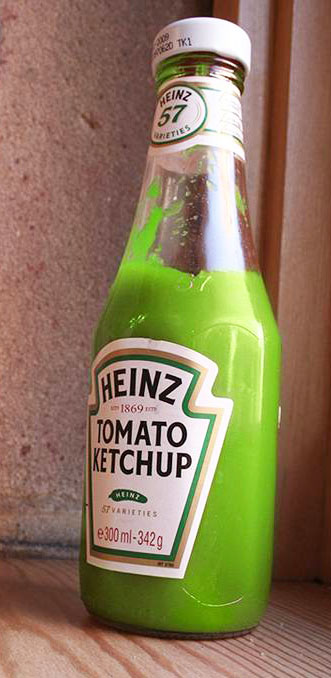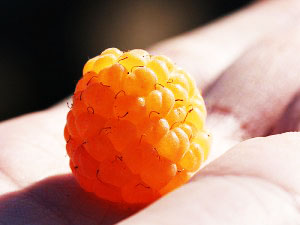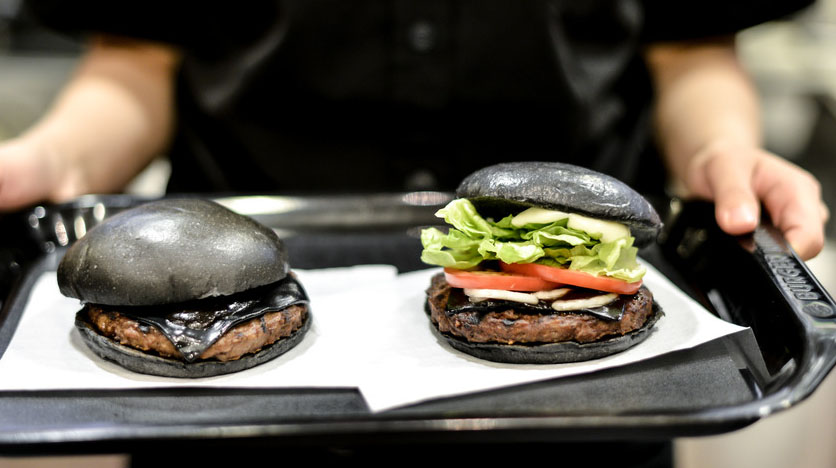Color me chubby
You know you’ve said it. We all have. “Mmm, that looks so delicious — I want to try some!” The colors we see before the first morsels or sips hit our tastebuds have mattered to people for millennia. The American food palate, where the visual spectrum we choose from includes not only the primary colors but artificial ones that nature couldn’t even dream up. For well over a century, food manufacturers in the United States have used synthetic dyes in their products as part of their production and marketing efforts. Often, it’s been in hopes of making a mass-produced food look as fresh and natural as possible.
In other cases, it’s been about making an item look interesting or distinctive from competitors, like candies or desserts in an electric blue or neon pink. Think “blue raspberry Slurpee” or “Flamin’ Hot Cheetos.” It hasn’t been without controversy with the decision last month from the federal Food and Drug Administration to ban red dye No. 3 from foods and oral-ingested drugs because of concerns over a possible cancer risk. But no one’s calling for food NOT to be colorful. That’s because there’s no escaping the importance of what we see when it comes to what we eat.
“Your first sensory contact, if your eyes are open, is going to be sight,” she says. “That’s going to be the first judgment we’re going to make.” The food manufacturers of the late 1800’s century knew they had to get the visual appeal right. It was part of their marketing, as a shorthand to encourage brand recognition, to make consumers feel comfortable about quality. Over time, dyes were deployed to make foods look “fun” and appealing to audiences like young children. In a study where participants were asked to try and pour out M&Ms until they reached a specified amount in a bowl, the participants poured 12% more into a bowl when the M&M’s were multicolored rather than a single color.
Chips and other snacks are marketed in color as having an extra kick . Often, “they’re super red because (companies are) trying to say, ‘Hey, this is going to be spicy’ because they’re trying to get to this sensation or perception that this is going to be really spicy — buy it.” All of us subconsciously associate certain colors with distinct tastes and flavors. For most people, red is associated with spice, yellow and green with sourness, white with salt, and brown and black with bitterness. “The research shows that even infants only a few months old are already starting to pick up these associations between color and taste.
And when our color cues are completely mixed up or absent, this can throw us into confusion. For instance, limited edition white Skittles had consumers baffled. Using completely unexpected food colors is a frequent marketing ploy to gain attention and boost sales. These efforts include Burger King Japan’s all-black burgers colored with bamboo charcoal and squid ink and a green tomato ketchup launched by Heinz to promote the first Shrek film. Because very few foods are naturally blue, these unusual products stand out on the shelf and hence capture our attention – we notice it.
Coloring your tastes
I just found out I’m color blind.
The News came out of the purple.
I’m not Racist, I don’t even see color…
I just see black and white.
If you truly believe that “Color Doesn’t Matter,”
Try arguing with your wife when choosing wallpaper.
They said swallowing food coloring is dangerous.
That’s because it might make you dye.
February 11th Birthdays
1983 – Natalie Dormer, 1969 – Jennifer Aniston, 1964 – Sarah Palin, 1962 – Sheryl Crow
1936 – Burt Reynolds, 1992 – Taylor Lautner, 1926 – Leslie Nielsen, 1847 – Thomas Alva Edison





